Abstract
Medical language processing (MLP) systems that codify information in textual patient reports have been developed to help solve the data entry problem. Some systems have been evaluated in order to assess performance, but there has been little evaluation of the underlying technology. Various methodologies are used by the different MLP systems but a comparison of the methods has not been performed although evaluations of MLP methodologies would be extremely beneficial to the field. This paper describes a study that evaluates different techniques. To accomplish this task an existing MLP system MedLEE was modified and results from a previous study were used. Based on confidence intervals and differences in sensitivity and specificity between each technique and all the others combined, the results showed that the two methods based on obtaining the largest well-formed segment within a sentence had significantly higher sensitivity than the others by 5% and 6%. The method based on recognizing a complete sentence had a significantly worse sensitivity than the others by 7% and a better specificity by .2%. None of the methods had significantly worse specificity.
Full text
PDF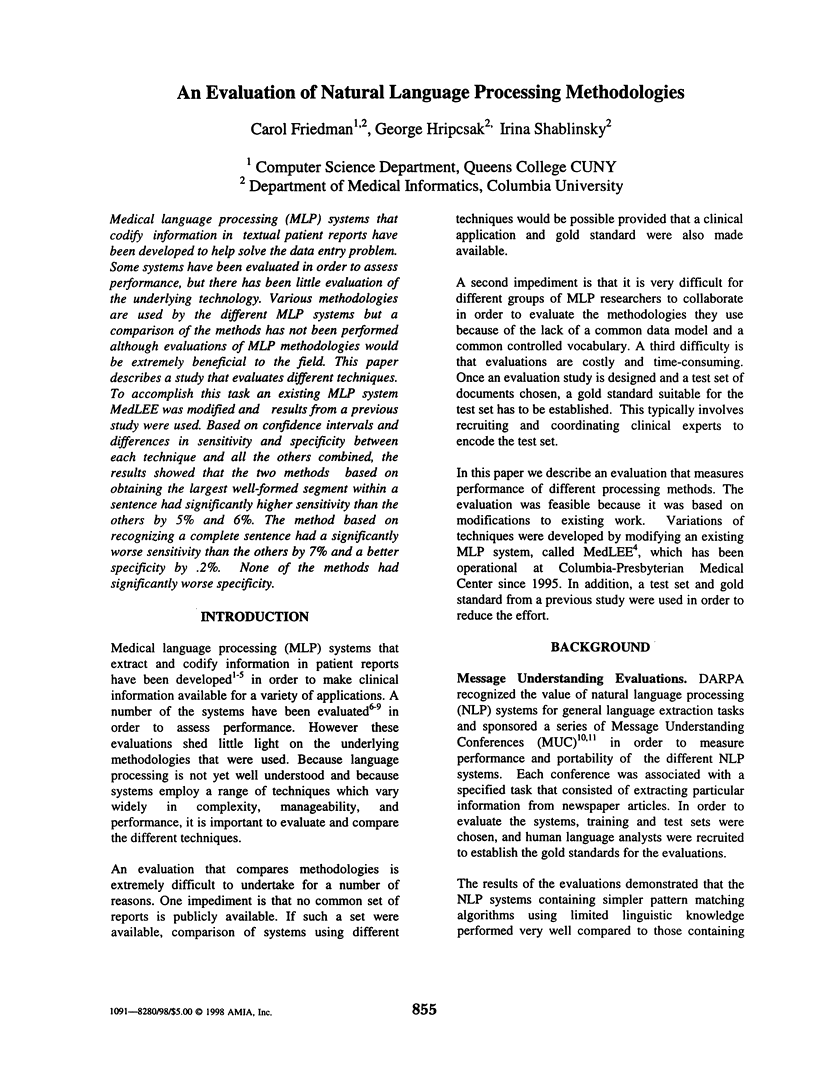
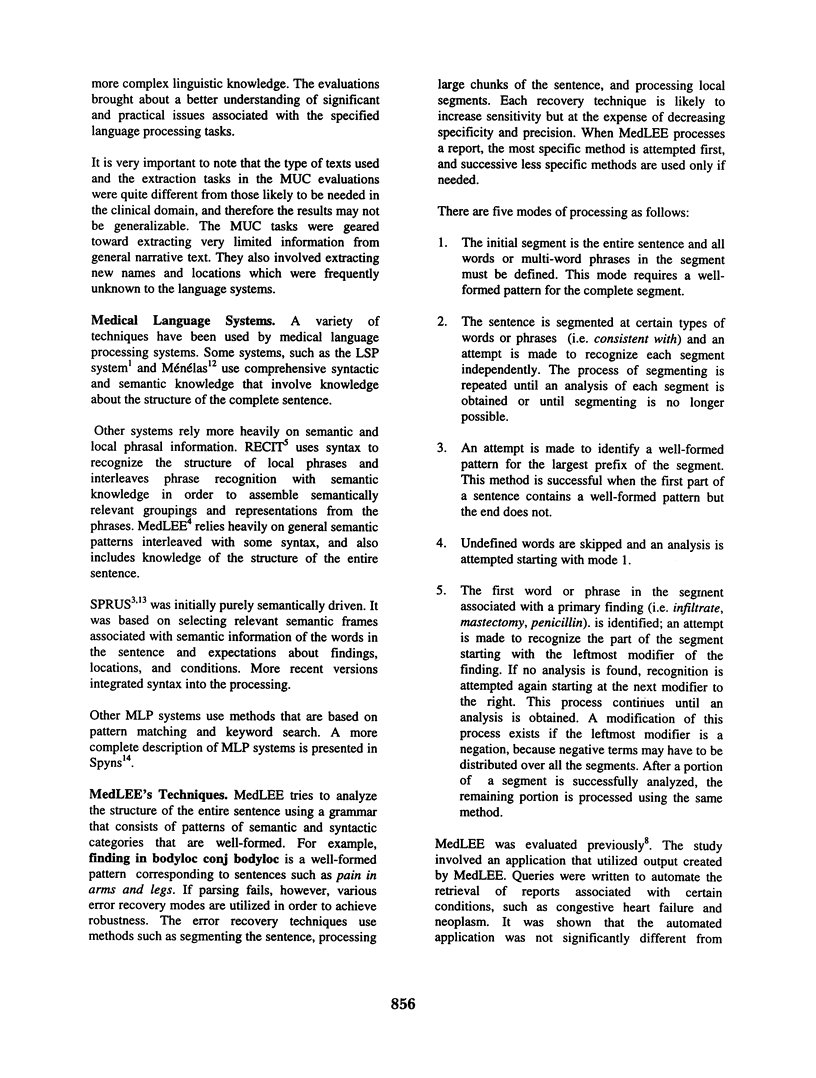
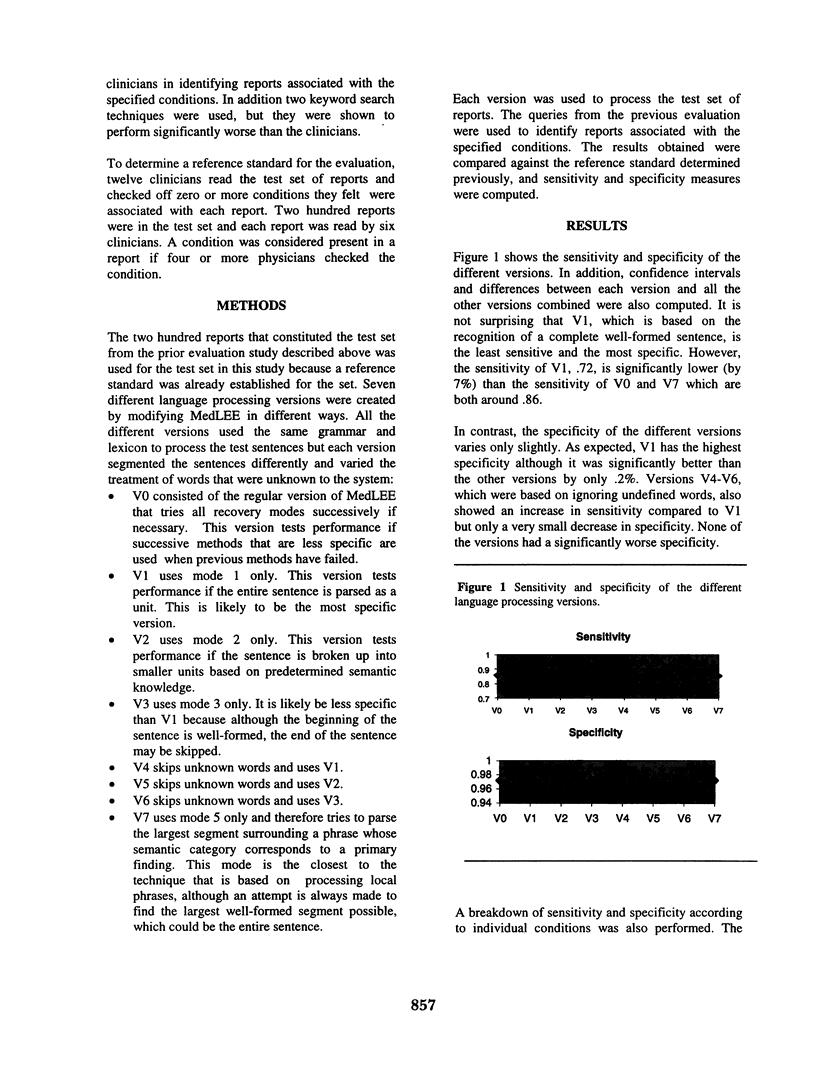
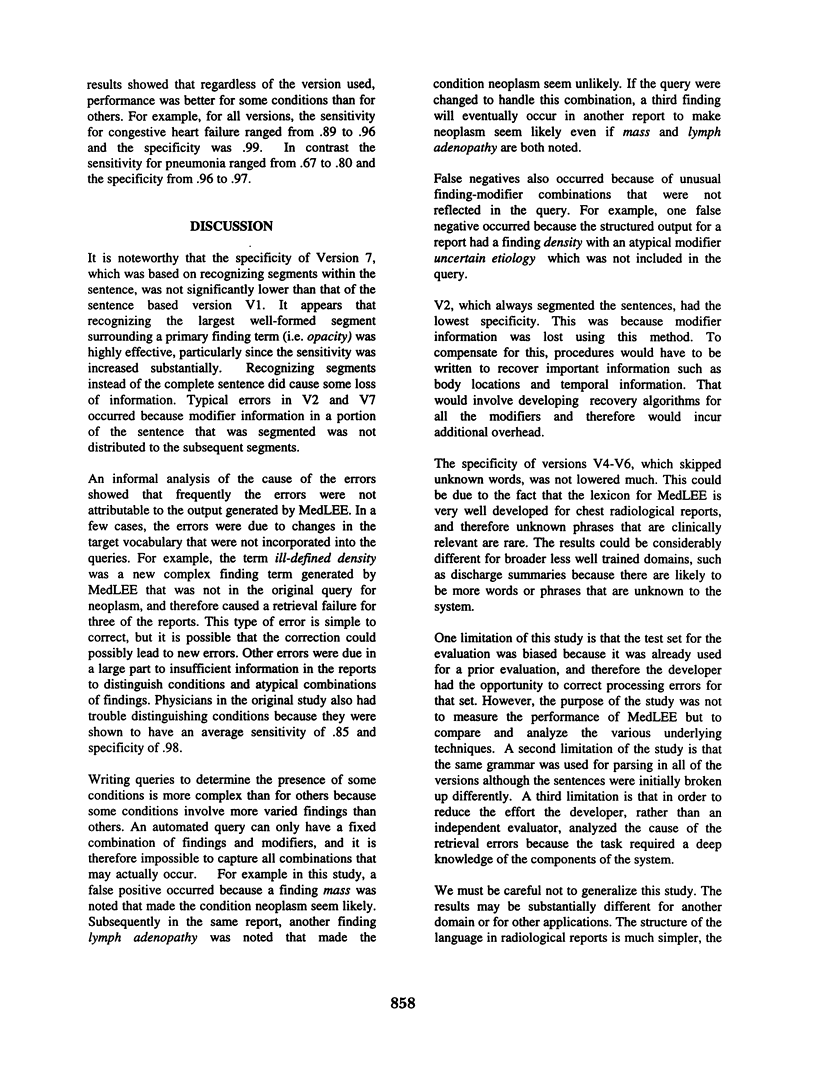
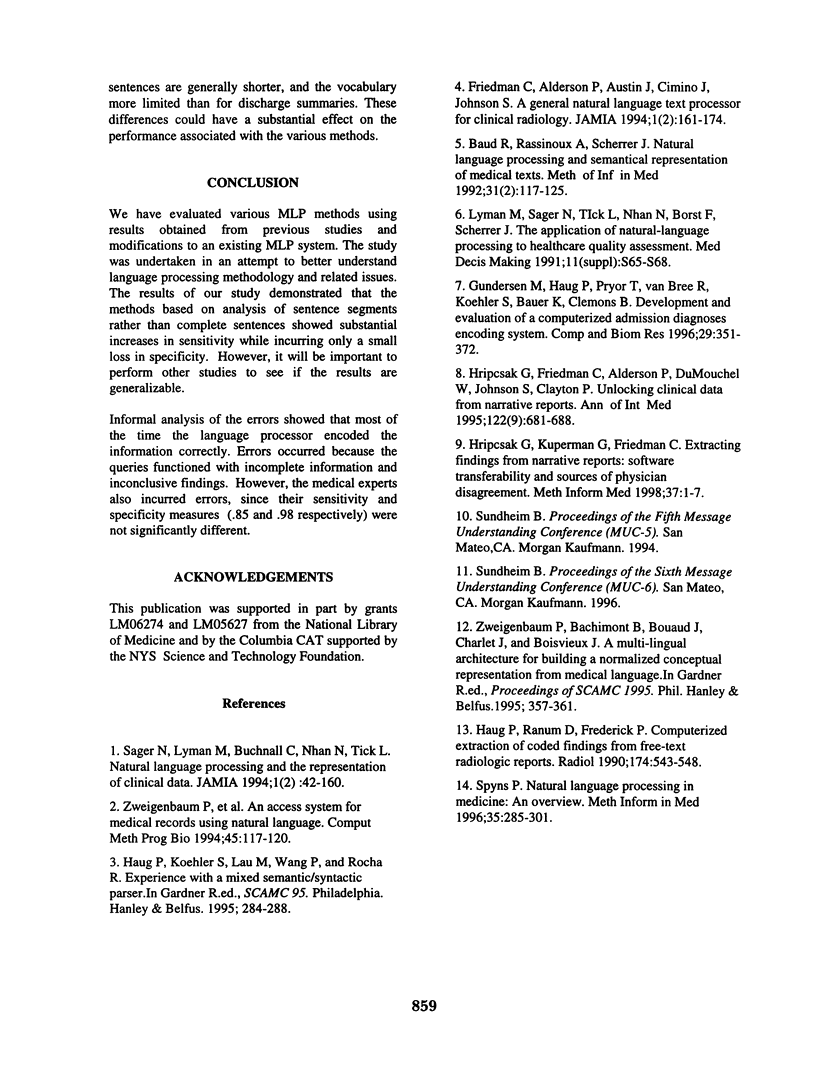
Selected References
These references are in PubMed. This may not be the complete list of references from this article.
- Baud R. H., Rassinoux A. M., Scherrer J. R. Natural language processing and semantical representation of medical texts. Methods Inf Med. 1992 Jun;31(2):117–125. [PubMed] [Google Scholar]
- Friedman C., Alderson P. O., Austin J. H., Cimino J. J., Johnson S. B. A general natural-language text processor for clinical radiology. J Am Med Inform Assoc. 1994 Mar-Apr;1(2):161–174. doi: 10.1136/jamia.1994.95236146. [DOI] [PMC free article] [PubMed] [Google Scholar]
- Haug P. J., Ranum D. L., Frederick P. R. Computerized extraction of coded findings from free-text radiologic reports. Work in progress. Radiology. 1990 Feb;174(2):543–548. doi: 10.1148/radiology.174.2.2404321. [DOI] [PubMed] [Google Scholar]
- Hripcsak G., Friedman C., Alderson P. O., DuMouchel W., Johnson S. B., Clayton P. D. Unlocking clinical data from narrative reports: a study of natural language processing. Ann Intern Med. 1995 May 1;122(9):681–688. doi: 10.7326/0003-4819-122-9-199505010-00007. [DOI] [PubMed] [Google Scholar]
- Hripcsak G., Kuperman G. J., Friedman C. Extracting findings from narrative reports: software transferability and sources of physician disagreement. Methods Inf Med. 1998 Jan;37(1):1–7. [PubMed] [Google Scholar]
- Lyman M., Sager N., Tick L., Nhan N., Borst F., Scherrer J. R. The application of natural-language processing to healthcare quality assessment. Med Decis Making. 1991 Oct-Dec;11(4 Suppl):S65–S68. [PubMed] [Google Scholar]
- Sager N., Lyman M., Bucknall C., Nhan N., Tick L. J. Natural language processing and the representation of clinical data. J Am Med Inform Assoc. 1994 Mar-Apr;1(2):142–160. doi: 10.1136/jamia.1994.95236145. [DOI] [PMC free article] [PubMed] [Google Scholar]
- Spyns P. Natural language processing in medicine: an overview. Methods Inf Med. 1996 Dec;35(4-5):285–301. [PubMed] [Google Scholar]
- Zweigenbaum P. MENELAS: an access system for medical records using natural language. Comput Methods Programs Biomed. 1994 Oct;45(1-2):117–120. doi: 10.1016/0169-2607(94)90029-9. [DOI] [PubMed] [Google Scholar]


